News Articles (Cycling)
~
~
End of the line for construction as new Keswick to Threlkeld Railway trail is reopened

Exactly five years after Storm Desmond hit Cumbria and destroyed the Keswick to Threlkeld Railway trail, the new and improved route is being opened for the local community and visitors to enjoy.
To mark the occasion, two local school children from Threlkeld and St Herbert’s Primary Schools were the first through the Bobbin Mill tunnel which has been re-opened for the first time in nearly 50 years as part of the £7.9 million project to fully reconnect the route.
Monty and Holly both aged 10, were joined by the Mayor of Keswick, Paul Titley, Chief Executive of the Lake District National Park Authority, Richard Leafe, along with various other community and partner representatives for a socially distanced celebration.
The Keswick to Threlkeld Railway trail has been fully reconnected and enhanced, new picnic benches, seats and perches at viewpoints have been installed as well as new comprehensive on-site interpretation to fully tell the national park local history and heritage story of the trail and give information on local wildlife and flora and fauna.
Have a look at what we’ve been doing …
CLICK HERE >>> Keswick to Threlkeld Video

SOURCE: NEWSLETTER – Cath Johnson (12/20)
~
~
Cycling on towpaths FAQs (update)

Do I need a permit to cycle on towpaths?
You don’t need a permit to cycle on our towpaths. We simply ask that you cycle with great care for pedestrians, wildlife and the fabric of our waterways to ensure that everyone can enjoy them to their full potential.
Is the towpath a public right of way?
Most towpaths are not public rights of way. Instead, the majority of our towpaths are ‘permissive paths’ as we allow members of the public to use them. Occasionally we need to close towpaths to carry out maintenance work. Find out about any towpath closures.
What is the speed limit on the towpath?
We don’t specify speed limits on the towpath. We ask that everyone uses common sense, with primary consideration for pedestrians and those handling boats, as they are often the most vulnerable. At busy times anyone in a hurry should use an alternative route.
Some cyclists cycle very fast and dangerously. What are you doing about this?
Most visitors are considerate and slow down when approaching others. Sadly, however, there is a minority of people (some of which are on bikes) who need reminding to Drop the Pace. This is why we run this campaign. Towpaths are for everyone so it’s important that we are all considerate of our speed, regardless of how we travel.
Joggers sometimes jog side by side and occasionally refuse to move. How can we stop this?
There is nothing wrong with jogging side by side, per se, but using common sense and being polite is the key to ensuring limited space is used sensibly. If you are travelling in a group, do what you can to make room for others and you can’t go too far wrong.
CLICKHERE>>>
–
–
–
–
–
–
Pedestrians wear headphones so when I ring my bell they don’t move. What should I do?
Pedestrians are generally the most vulnerable and have priority at all times, so whilst it’s a good idea to let others know you are there by ringing a bell or calling out, this shouldn’t be a demand. This is especially important when considering people who may have impaired hearing.
I’ve been involved in an accident with another visitor on the towpath – what should I do?
All accidents, incidents and near misses should be reported to us. Please visit our contact us pages for more information.
Why is the towpath not wider?
Towpaths were built (in most cases) over 200 years ago for horses to pull barges. In many places, where we have been able to, we have improved the existing towpath width so it can be shared more comfortably by everyone.
Am I more likely to get a puncture from thorns and branches if I cycle on your towpaths?
We do our best to cut back vegetation but with over 2,000 miles of towpaths to care for it is possible that you will encounter thorns, branches and other vegetation on your cycle, especially during spring. We recommend carrying a pump, basic tools and a spare inner tube or a puncture repair kit with you. You could also invest in puncture resistant tyres.
Is there a map specifically designed for the towpath to see where there is and isn’t a towpath to cycle?
We’re working on it! At the moment we don’t have a map of our towpaths available but we do have a map showing all of our canals and rivers. You can use this to plan your journey and then follow any signs asking you to walk with your bike. You can also see details of any towpath closures by searching through our stoppages and notices section of the site.
SOURCE: CANAL & RIVER TRUST (05/18)
~
~
Crowd funding scheme to help Trafford care home residents
A new crowd funding scheme in Trafford is aiming to boost mobility and leisure opportunities for older people across the borough.
Cycling Without Age Trafford are seeking to raise £7,000 for a new trishaw, which will allow local volunteers to 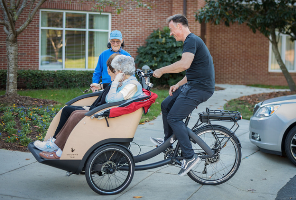 visit care and facilities for older people around the community and offer residents an opportunity to be a passenger.
visit care and facilities for older people around the community and offer residents an opportunity to be a passenger.
The specially designed trishaw will enable residents to get outdoors and explore the world around them, meet people and take in the fresh air and environment.
The group are part of the global initiative Cycling Without Age, which aims to bring generations closer together by sharing experiences by bike. It’s now in over 1,000 Care Homes in 30 countries worldwide.
For more information, or to offer funding, visit the Cycling Without Age Trafford funding website.
SOURCE: Transport for Greater Manchester NEWSLETTER (1/18)
~
~
Radcliffe goes cycle-friendly
Cyclists and pedestrians can look forward to a host of improvements in Radcliffe thanks to a new £150,000 scheme.
The innovative project, which is being delivered by Bury Council, is part of the Cycle City programme led by Transport for Greater Manchester (TfGM) with Department for Transport funding. It includes a number of upgrades that will make cycling a more attractive option for residents and visitors to the town centre.
A dedicated cycle crossing, with low-level signals for cyclists, is being introduced at the junction of the A665 Pilkington Way and Blackburn Street. It will be the first of its type to be built in Greater Manchester.
Once complete, the new crossing will help cyclists to travel across town and avoid busy junctions, as well as linking them to a growing network of other cycle routes across the region, including National Cycle Network Route 6 at Church Street West and the Banana Path.
The new junction also includes three pedestrian crossings, making it easier to walk to the town centre from nearby residential areas.
The cycle crossing connects to the lychgate of the Parish Church of St Thomas and St John. The church’s Vicar, Elizabeth Binns, has welcomed the plans: “We’re really pleased to see improvements being made in our town and especially as it will make access to our wonderful church even easier.
“Passing walkers and cyclists will be very welcome at our community café on Saturday mornings and, if they’re feeling a bit exhausted by a new exercise regime, we’ll happily add a prayer or two.”
The second phase of the scheme will include new ‘Toucan’ crossings and upgraded paths for pedestrians and bikes through the green space between Hutchinson Way and Sion Street, to improve pedestrian and cycle safety. In addition, more cycle parking will be introduced in the town centre.
The project will support the economic growth of the town, helping people to access employment opportunities, health, education and leisure facilities.
TfGM Committee Cycling and Walking Champion, Councillor Chris Paul, said: “By making roads in and around Radcliffe cycle-friendly and providing more cycle parking, people will find it easier than ever to travel by bike.
“I’m particularly looking forward to the new cycle crossing, which will connect Radcliffe to a number of great routes for people on bikes and on foot that make use of disused railway lines and canal towpaths. This network will link people in Radcliffe to Bury, Bolton and on to Manchester city centre, all avoiding busy roads.
“Greater Manchester has made a good start in making a trip by bike easier and more attractive and we have big ambitions to do much more to enable more people to walk and cycle, particularly shorter journeys – an astonishing proportion of which are still made by car contributing to congestion and air pollution.”
Councillor Rishi Shori, Leader of Bury Council said: “This innovative new scheme, which is the first of its type in Greater Manchester, is really going to make a difference to people in Radcliffe – and it ticks so many boxes too. It’s good for business, good for the environment and it’s good for people’s health.
“When it’s finished it will be so much easier for us to leave our cars at home, choose to get away busy traffic and get walking or cycling into Radcliffe and Bury, or even further afield with the convenient links to Bolton and to Manchester City Centre.”
The first phase of works (the cycle crossing on Pilkington Way) is expected to be completed by the end of the year. During this time, there will be single-lane traffic on Pilkington Way. The second phase of works is due to start in the New Year.
Work will take place Monday to Friday between 9.30am and 3pm to minimise disruption.
The £20m first phase of the DfT-funded Cycle City programme has seen the construction of six new cycleways linking residents to major employment areas alongside improved cycle parking and facilities at transport interchanges, railway stations, Metrolink stops, workplaces, and social housing sites; 11 schools benefiting from new cycling facilities and training through the Cycle Schools and Colleges project; and training and support for people who would like to cycle more or who are new to cycling.
The second phase involves a further £22 million investment in additional new and improved cycleways; five new cycle-friendly district centres, including Radcliffe; 10 additional schools joining the Cycle Schools and Colleges project; further improvements to cycle parking and continued cycle training and support.
To find out more about the Cycle City programme, visit the TfGM cycling pages at www.tfgm.com/cycling.
SOURCE: Transport for Greater Manchester NEWSLETTER (10/17)
~
~
The seven wonders of the waterways
Have you visited all of the original seven wonders of the waterways? Read on to see how many you can tick off your bucket list(?).
 Boat crossing Pontcysyllte Aqueduct on Llangollen Canal
Boat crossing Pontcysyllte Aqueduct on Llangollen CanalThe original ‘seven wonders of the waterways’ list was compiled by Robert Aickman (co-founder of the Inland Waterways Association) some half a century ago. The list has been revised and added to over the years, but let’s take a look at the seven Aickman selected to see if you agree with him…
1. Pontcysyllte Aqueduct
Experience the thrill of being suspended in mid-air as you cross the Pontcysyllte Aqueduct by boat.
Thomas Telford and William Jessop’s awe-inspiring aqueduct is a Scheduled Ancient Monument; a Grade I Listed structure – and in June 2009 became a World Heritage site, putting it on an equal footing with the Great Barrier Reef and Statue of Liberty. The aqueduct, taking the Llangollen Canal over the beautiful River Dee valley, is 1,000 feet long and 125 feet high. You can cross by boat or on foot – and although boaters have nothing but a sheer drop on one side of them, the towpath is mercifully protected by a set of railings.
2. Standedge Tunnel
The longest, deepest, and highest canal tunnel in the country, Standedge Tunnel – on the Huddersfield Narrow Canal – is nearly three and a half miles long and took 16 years to build. At 196 metres (645 feet) above sea level, Standedge Tunnel burrows 194 metres (638 feet) underneath the Pennines.
The tunnel, undoubtedly the centrepiece of the canal, is essentially an underground warren, which boaters can now pilot their own boats through. Visitors and walkers can also experience this feat of 19th Century engineering on a trip boat which runs from Standedge Tunnel and Visitor Centre.
3. Caen Hill Lock Flight
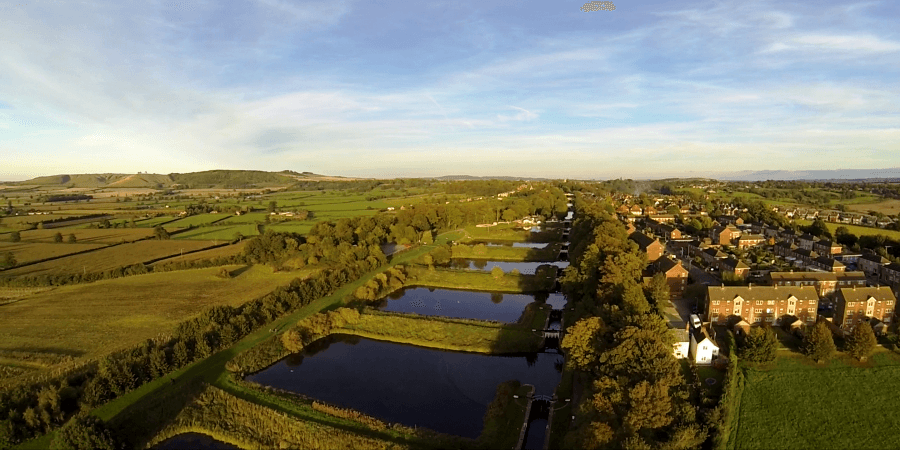 Arguably the longest flight of 16 locks – if not the most impressive anywhere on the UK’s waterways – Caen Hill was engineer John Rennie’s solution to climbing the very steep hill in Devizes.
Arguably the longest flight of 16 locks – if not the most impressive anywhere on the UK’s waterways – Caen Hill was engineer John Rennie’s solution to climbing the very steep hill in Devizes.
The locks and ponds were the last stretch of the Kennet & Avon Canal to be built in 1810 and form part of a longer 29-lock flight at Devizes, all packed into just over two miles. They are designated as a Scheduled Ancient Monument – the same level of heritage protection given to Stonehenge.
Once you’ve successfully managed the climb (by boat or on foot) you can recuperate at the Caen Hill Café.
4. Barton Swing Aqueduct
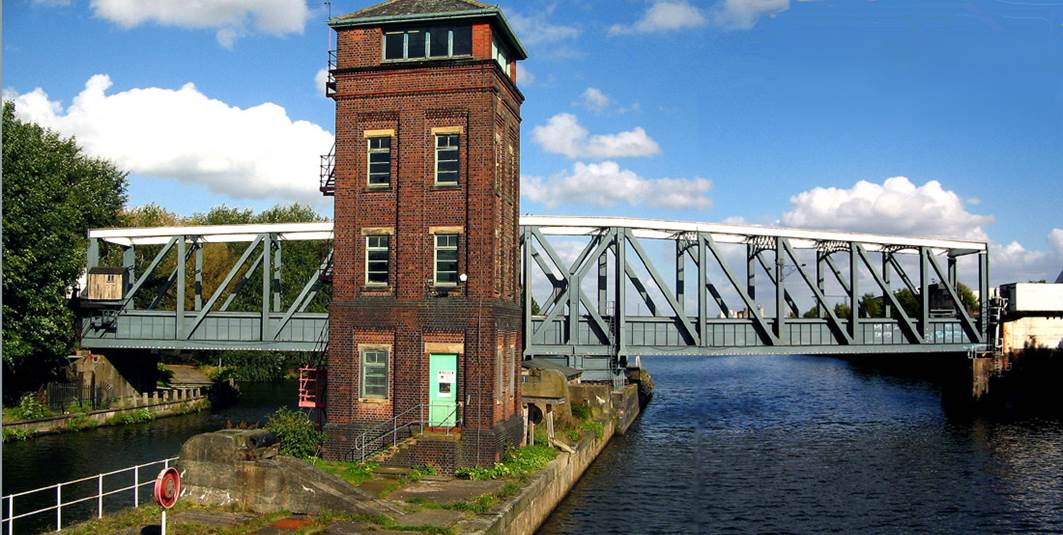 Originally this was the site of the first stone arch aqueduct over the River Irwell, built by James Brindley. However, when the River Irwell was canalised to make the Manchester Ship Canal (‘Big Ditch’), the aqueduct had to be rebuilt to allow for larger boats to pass underneath. The solution by Sir Edward Leader Williams – unique on the waterways – was to build a swinging aqueduct.
Originally this was the site of the first stone arch aqueduct over the River Irwell, built by James Brindley. However, when the River Irwell was canalised to make the Manchester Ship Canal (‘Big Ditch’), the aqueduct had to be rebuilt to allow for larger boats to pass underneath. The solution by Sir Edward Leader Williams – unique on the waterways – was to build a swinging aqueduct.
Essentially, the aqueduct, which carries the Bridgewater Canal, consists of a metal tank with doors at either end that is mounted on a central pillar. When required to open, the tank doors and doors to the canal at either end are closed, and then the whole tank, with 800 tons of water, pivots around the central point. The aqueduct can be seen operating daily, usually in late afternoon.
5. Anderton Boat Lift
No description can adequately convey the sheer scale of this engineering feat. The Anderton Boat Lift is an incredible edifice, perched on the banks of the River Weaver like some giant three-storey high iron spider. It was built by Edwin Clark in 1875 to lift cargo boats the 50 feet from the River Weaver to the Trent & Mersey Canal. Like all great things, the concept is simple: two huge water tanks, each with watertight sealable doors carry boats up and down.
From April to October you can enjoy boat trips through the lift and along the River Weaver Navigation.
6. Bingley Five Rise Locks
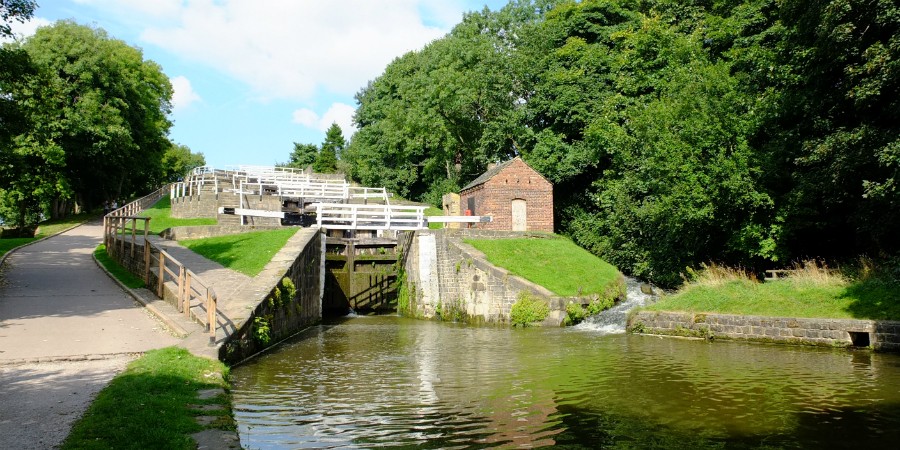 An 18th century engineering masterpiece, these five locks operate as a ‘staircase’ flight – in which the lower gate of one lock forms the upper gate of the next. When completed in 1774, thousands gathered to watch the first boats make the 60 foot descent. Now, over 200 years later, the flight is still in daily use providing access to 16 miles of lock-free cruising on the Leeds & Liverpool Canal in the glorious scenery of the Yorkshire Dales. If five loocks are amazing, what about 10? By 1805 Foxton’s 10 lock staircase was open and now rivals Bingley for visitor numbers.
An 18th century engineering masterpiece, these five locks operate as a ‘staircase’ flight – in which the lower gate of one lock forms the upper gate of the next. When completed in 1774, thousands gathered to watch the first boats make the 60 foot descent. Now, over 200 years later, the flight is still in daily use providing access to 16 miles of lock-free cruising on the Leeds & Liverpool Canal in the glorious scenery of the Yorkshire Dales. If five loocks are amazing, what about 10? By 1805 Foxton’s 10 lock staircase was open and now rivals Bingley for visitor numbers.
7. Burnley Embankment
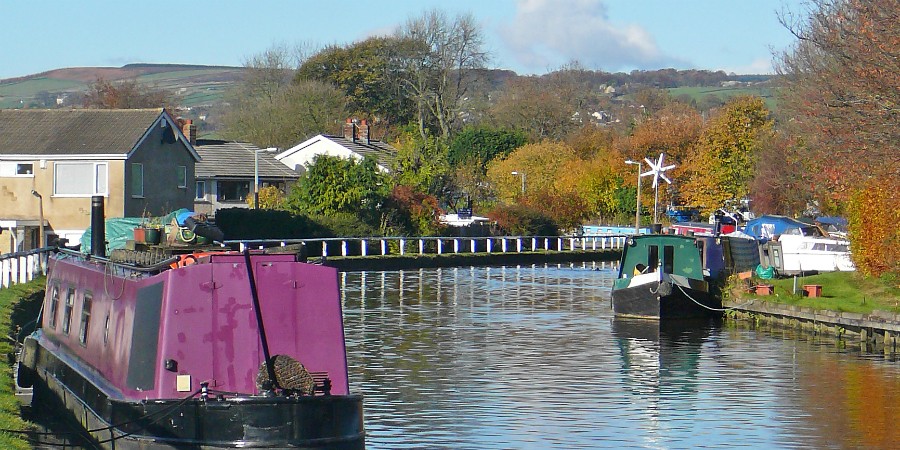 Known principally for its industrial past, Burnley is surrounded by some of the most beautiful countryside in England and is also home to one of the seven wonders of the waterways, Burnley Embankment. This mile-long stretch of embankment carries the Leeds & Liverpool Canal through the centre of the town, up to 60 feet above the buildings below.
Known principally for its industrial past, Burnley is surrounded by some of the most beautiful countryside in England and is also home to one of the seven wonders of the waterways, Burnley Embankment. This mile-long stretch of embankment carries the Leeds & Liverpool Canal through the centre of the town, up to 60 feet above the buildings below.
SOURCE: CANAL & RIVER TRUST (06/17)
6 out of the 7 feature in our Cycle Routes or Cycling Holidays!!! (VA)
~
~
New Wheelchair-friendly Route – Grimwith Access Day
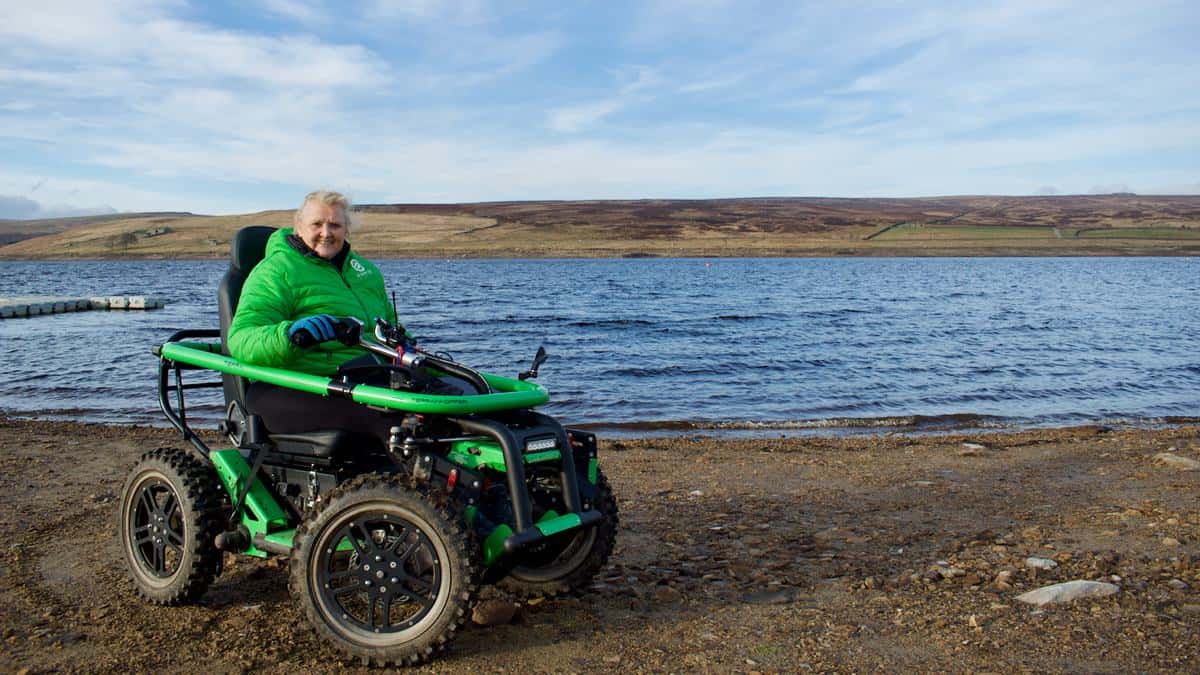
Hand bikers making their way around Grimwith Reservoir
- Access the Dales and Terrain Hopper
- Experience Community
- National Trust
- Lancashire County Council
- Yorkshire Trike Tours
- Open Country.
Grimwith Sailing Club very generously provided access to their facilities for the day.
SOURCE: YORKSHIRE NATIONAL PARK AUTHORITY (10/16)
~
~
Cycling Along Towpaths FAQs
We’ve listed some of the most frequently asked questions about cycling for you here.
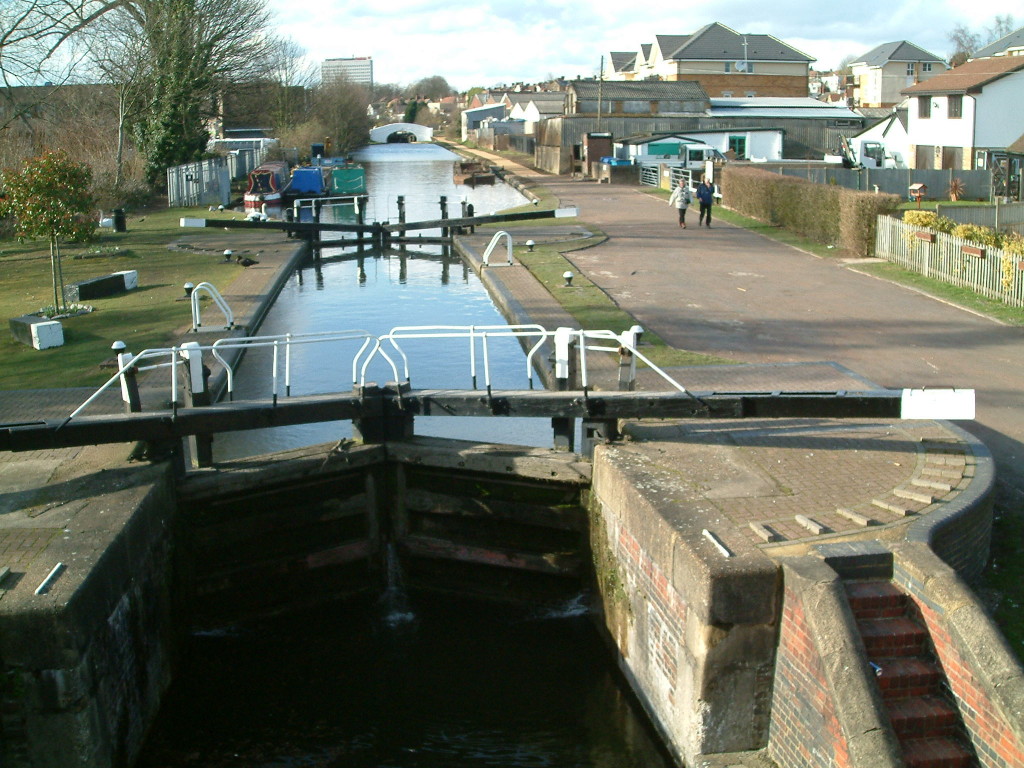
Do I need a permit to cycle on towpaths? You don’t need a permit to cycle on our towpaths. We simply ask that you cycle with great care for pedestrians, wildlife and the fabric of our waterways to ensure that everyone can enjoy them to their full potential. Is the towpath a public right of way? Most towpaths are not public rights of way. Instead, the majority of our towpaths are ‘permissive paths’ as we allow members of the public to use them. Occasionally we need to close towpaths to carry out maintenance work. Find out about any towpath closures What is the speed limit on the towpath? We don’t specify speed limits on the towpath. We ask that everyone uses common sense, with primary consideration for pedestrians and those handling boats, as they are often the most vulnerable. At busy times anyone in a hurry should use an alternative route. Some cyclists cycle very fast and dangerously. What are you doing about this? Most visitors are considerate and slow down when approaching others. Sadly, however, there is a minority of people (some of which are on bikes) who need reminding to Drop the Pace. This is why we run this campaign. Towpaths are for everyone so it’s important that we are all considerate of our speed, regardless of how we travel. Joggers sometimes jog side by side and occasionally refuse to move. How can we stop this? There is nothing wrong with jogging side by side, per se, but using common sense and being polite is the key to ensuring limited space is used sensibly. If you are travelling in a group, do what you can to make room for others and you can’t go too far wrong. Pedestrians wear headphones so when I ring my bell they don’t move. What should I do? Pedestrians are generally the most vulnerable and have priority at all times, so whilst it’s a good idea to let others know you are there by ringing a bell or calling out, this shouldn’t be a demand. This is especially important when considering people who may have impaired hearing. I’ve been involved in an accident with another visitor on the towpath – what should I do? All accidents, incidents and near misses should be reported to us. Please visit our contact us https://canalrivertrust.org.uk/contact-us pages for more information. Why is the towpath not wider? Towpaths were built (in most cases) over 200 years ago for horses to pull barges. In many places, where we have been able to, we have improved the existing towpath width so it can be shared more comfortably by everyone. Am I more likely to get a puncture from thorns and branches if I cycle on your towpaths? We do our best to cut back vegetation but with over 2,000 miles of towpaths to care for it is possible that you will encounter thorns, branches and other vegetation on your cycle, especially during spring. We recommend carrying a pump, basic tools and a spare inner tube or a puncture repair kit with you. You could also invest in puncture resistant tyres. Is there a map specifically designed for the towpath to see where there is and isn’t a towpath to cycle? We’re working on it! At the moment we don’t have a map of our towpaths available but we do have a map showing all of our canals and rivers. You can use this to plan your journey and then follow any signs asking you to walk with your bike. You can also see details of any towpath closures by searching through our stoppages and notices section of the site.
SOURCE: CANAL & RIVER TRUST (06/15)